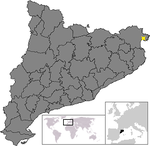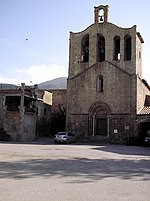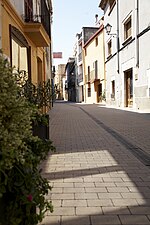Basílica de Santa Maria de Castelló d'Empúries

The Santa Maria Basilica (the Basílica de Santa Maria de Castelló d'Empúries, or the Catedral de l'Empordà or the Catedral de Castelló d'Empúries (in Catalan)), located in the municipality of Castelló d'Empúries in Girona, Catalonia, Spain, has for centuries been regarded as the Empordà Cathedral, although papal authorities have never granted it this rank. The building is the second largest in the Costa Brava, after the Girona Cathedral, and is big enough to justify cathedral status. It is a Gothic building begun in the thirteenth century that replaced a primitive Romanesque church from the tenth century. A few vestiges of this building remain, such as the first floors of the bell tower and the grant baptismal. It was completed in the fifteenth century, when the marble facade and the alabaster altarpiece of the main altar were finished. It contains a museum known as El Tresor, which contains a large collection of religious jewelry.The church is dedicated to the Virgin of Candelera.
Excerpt from the Wikipedia article Basílica de Santa Maria de Castelló d'Empúries (License: CC BY-SA 3.0, Authors, Images).Basílica de Santa Maria de Castelló d'Empúries
Carrer de Pere Estany,
Geographical coordinates (GPS) Address External links Nearby Places Show on map
Geographical coordinates (GPS)
| Latitude | Longitude |
|---|---|
| N 42.259505555556 ° | E 3.0758861111111 ° |
Address
Basílica de Santa Maria (Santa Maria de Castelló d'Empúries;Catedral de l'Empordà;Catedral de Castelló d'Empúries)
Carrer de Pere Estany
17486
Spain
Open on Google Maps











